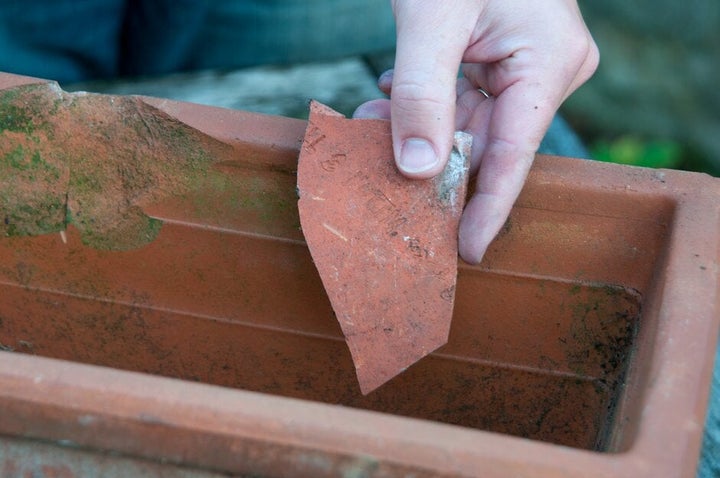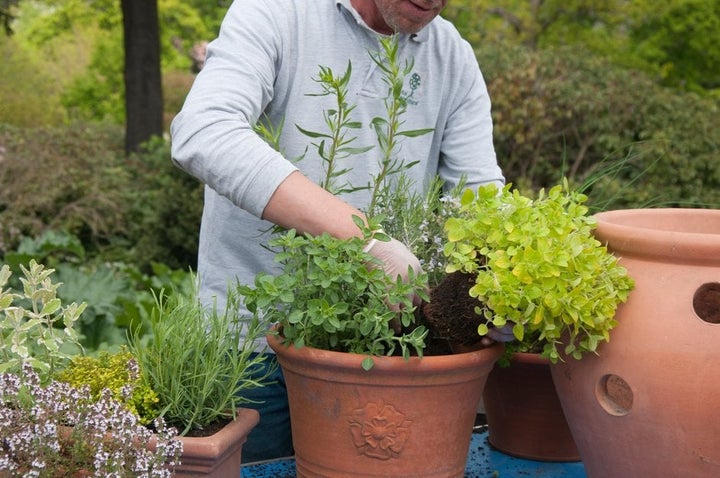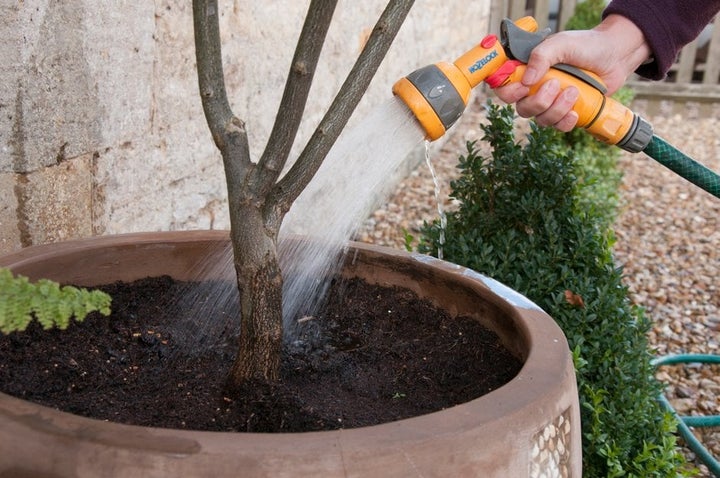
Quick facts
Grouping containers together looks good and provides them with some protection from extreme temperatures
Can be used to add structure and interest to doorsteps, patios and decking
Growing tender plants in containers allows you to move them to a protected position for the colder months
Plants that may spread too much in the ground, such as mint, can be kept under control by growing them in containers
A container garden allows you to grow plants that might not be suitable for your garden soil, and where there is no soil
Getting Started
The size and shape of your container should be suitable for the needs of the plants you select. For details of the many different types of plants suitable for container growing, see our container gardening hub. The best for containers is often a peat-free multipurpose compost, but some plants have different requirements. For information on choosing a suitable compost and container, and more details on planting in pots, see our advice page on growing plants in containers.
What you will need to plant up a container:
- Selection of plants
- A suitable container
- Peat-free compost
- to cover the compost (optional)
- Broken pots or stones to cover large drainage holes
- A hand trowel, or a spade for large containers and plants
- Watering can
Top Tip
Rather than buying bagged peat-free compost for your containers, you can make your own by mixing soil with garden compost. See our guide to making your own potting mix.
How to plant up a container in six simple steps

- Cover large drainage holes If your pot has drainage holes of more than about 2.5cm (1in) in diameter, place some stones or crocks (broken terracotta) over them to prevent falling through. If drainage holes are small, there is no need to cover them.

- Place compost in your container Fill to a level where the rootballs of your plants will sit within the container (ideally about 5cm (2in) below the rim) when sat atop the compost, then lightly firm it down.

- Remove plants from their nursery pots and position them in the container Consider what angles the container will be viewed from – for pots against a wall or fence you will typically want taller plants at the back, for free-standing containers viewed from all sides you might have taller plants in the centre. Bear in mind that trees and shrubs often have a ‘front face’ or ‘best side’.

- Fill the gaps around your plants Add peat-free compost around the plants, gently firming it down to fill any spaces. A slight gap between the top of the compost and the top of the container will prevent compost spilling out when watering.

- Water well Water slowly and thoroughly to soak the compost. Use a rose on the end of a watering can or a hose with a fine spray to avoid disturbing the compost. If any leaves got compost on them during planting, wash it off with a gentle spray of water.

Aftercare
Watering is the main duty when caring for plants in containers. Many factors determine how much and how often you need to water; for more information, see our handy step-by-step guide to watering containers.
Feeding and repotting will also be required for long-term container plantings; for more information see our guide to container maintenance.















